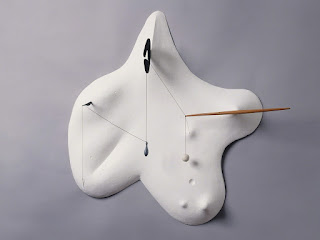VIII: Women in Sculpture, Yayoi Kusama
The fact that gender equality throughout history has been non-existent with few exceptions is common knowledge and certainly not a proud point for my gender. The oppression of women in the professional world spans pretty much every occupation imaginable. It is a known fact that men have considered themselves better at every aspect of life with maybe the exception of homemaking and the raising of children yet if a man were to take up said occupations, or if those were real and less vague occupations, they would certainly be paid more for the same work. It is no surprise that women have also gotten the same treatment in the history of art. In a way, the visual art world is not so bad in terms of the progress that has been achieved relative to other occupations but this is only accounting for female painters and the less serious “craft” artists that worked with textiles and pottery. When looking for female sculptors who achieved notoriety in their lifetime, one has to only turn back the clock to the mid twentieth century. In truth, after some quick research I found that there were quite a few women getting into sculpture during the same era of Rodin but we all know how Camille Claudel ended up. It’s unclear, but I’m sure a fair share of the other female sculptors of the time shared a similar story.
The obstacles women artists have had in the past were issues with being taken seriously entirely due to male chauvinism. A woman’s voice has been seldom heard in the history of mankind and in the history of art there was no exception. Women were particularly hindered from creating sculptural works or from becoming sculptors. As stated before, men, who made up the body of art critics throughout most of history, basically teamed up to agree on the idea that women had simple minds that could not contribute to critical artistic thought, and at the very least they did not have the physical strength or toughness it takes to work in the materials that sculpture has traditionally been executed in such as wood, stone and steel. Sculpture stands out as an especially unattainable art form for women in the past because on top of men thinking the things stated before, men had also organized “the system” so that women did not have the financial independence to embark on an expensive project nor did they even have the proper training program in place at the prominent universities at the time.
Nowadays women do have more financial freedom and access to education so there are less obstacles in that respect in the developed world but there is still the issue with being taken seriously. Male chauvinism has never been extinguished and probably will not ever be completely gone and for the time being it still makes it hard for women to get started in the art world as they are still very much at the mercy of generally male gallerists and critics. I’m sure somewhere in Manhattan there is an art dealer who expects some sort of reciprocal service from female artists that he promotes because he still thinks women artists can be abused like they have in the past.
Yayoi Kusama is an amazing and prolific contemporary female painter/sculptor/artist that got her start in the 1960s in New York. It can be argued that Kusama’s early work that consisted of sewn and stuffed fabric to create soft polka dotted phalluses that she would install in large quantities in places like a small room lined with mirrors or the empty hull of a rowboat was stolen by non other than the father of soft sculpture, Claes Oldenburg. While visiting the Louisiana Museum in Denmark I was fortunate enough to see the Kusama retrospective that was being held there and I was shocked to find out from one of the tags that Oldenburg and Kusama lived in the same apartment building when she first came to New York and had shown Oldenburg some of her soft polka dotted phalluses which set off the lightbulb in Oldenburg’s head and he immediately stopped his “Street” work and started working on “The Store.” Kusama is an infinitely more successful artist to me, even though both have a place in my heart, so one cannot be too mad at the fact that Kusama may have created the concept of soft sculpture and receives almost no credit for it. Kusama was revolutionary in so many ways but she is probably most significant to the history of art by really bringing a level of celebrity and sensation to her work. People line up around the block for hours just to enjoy for mere seconds in one of her Infinity Rooms, people pay in the low millions for one of her Infinity Nets which she seemingly does as almost a warm up for a day pf work. Kusama was able to expose mankind to the daunting and equalizing nature of infinity as if to say, “we are all equal, equally nothing.”
#hadpratt, #hadsopratt, #hadstories, #hadhistoryofsculpture
#hadpratt, #hadsopratt, #hadstories, #hadhistoryofsculpture



Comments
Post a Comment